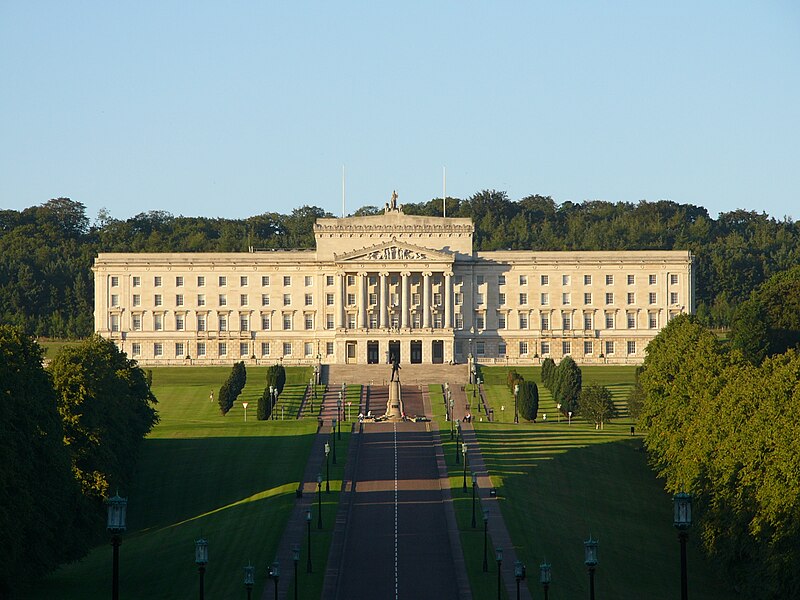Many people like to dress up for marathons, as viewers of
the annual London marathon will know – everything from a lion suit to a full
antique diving suit. What has this got
to do with Carrickfergus I hear you cry?
Well, earlier this month a couple from Carrickfergus who are members of
the local running club decided to work a marathon run into their wedding
celebrations. The couple, accompanied by
their guests, changed into running gear with a wedding theme and ran a variety
of distances so that as many people as possible could take part, right up to
the full 26 miles.
Carrickfergus is on the north shore of Belfast Lough, just
over the Antrim side of the County Down/County Antrim border which crosses the
eastern suburbs of Belfast. The town
takes its name from Fergus the Great, a legendary king of Dál Riata, a kingdom
that encompassed parts of Western Scotland as well as northeastern
Ireland. Carrickfergus was a prominent
settlement before Belfast, meaning that until the 17th Century the
Lough was known as Carrickfergus Bay. John
de Courcy, the Anglo-Norman knight who we have met several times already in
this blog, established his headquarters here in the 12th century and
built Carrickfergus Castle on "Carraig Fhearghais" (the rock of
Fergus) in 1177.
Carrickfergus has had an eventful history over the
centuries, at one point even becoming involved in the American War of
Independence. During the Nine Years War,
a struggle against English rule which began at the end of the 16th
century, the town was the scene of the Battle of Carrickfergus, which saw the
English defeated. The much wider Seven
Years’ War in the mid-18th century brought the forces of William of
Orange to the town, where they besieged the castle for several days and William
himself arrived on the scene. In 1777
there was a naval duel off Carrickfergus between the British Royal Navy vessel
HMS Drake and the 18-gun sloop Ranger of the Continental Navy, as the US Navy
was called during the War of Independence, which the Americans won. By the time of World War Two relations with
the US had improved to the point where the US Rangers used the Sunnylands Camp
in Carrickfergus for training before heading to Normandy. The Andrew Jackson Cottage and US Rangers Centre includes a museum dedicated to the US Rangers.
Carrickfergus Castle is still remarkably well preserved and
is open to visitors, with historical displays on view. The castle occupies a fetching position on
the northern shore of Belfast Lough. Near
the castle is the King William III (William of Orange) monument, a statue of
the king commemorating his landing in the town.
Further away from the shore, the Carrickfergus Museum, attached to the
Civic Centre, has displays dating from the Middle Ages onwards. For visitors staying in Belfast, the town is easily
reached by car or train from the capital.
 | |
| Carrickfergus Castle (2) - geograph.org.uk - 733522. Photo by Albert Bridge, via Wikimedia Commons. |


